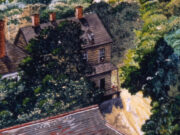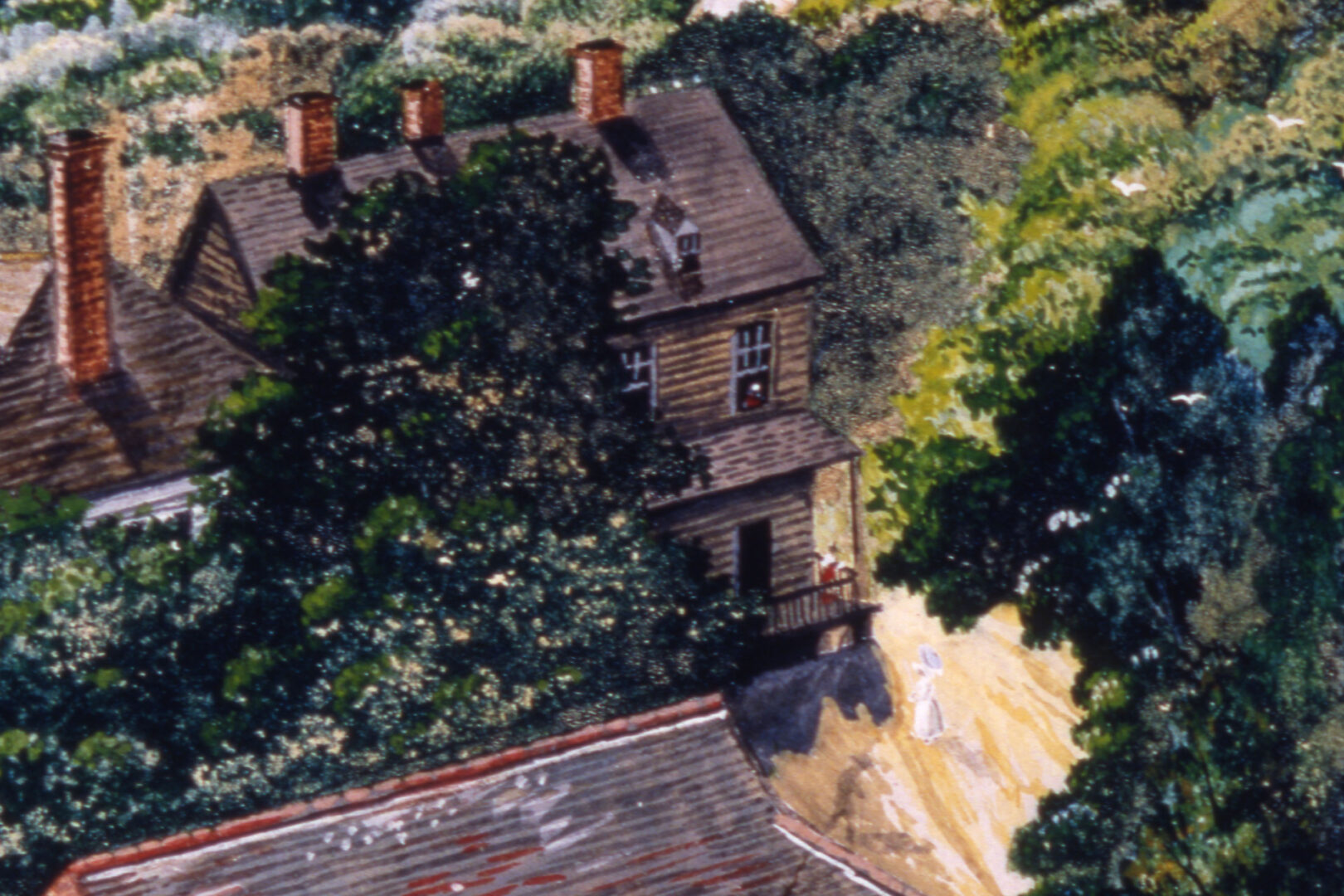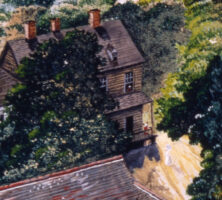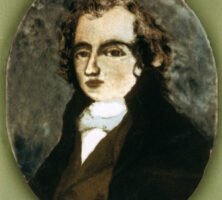Peter Tondee traveled to Savannah at the age of ten on the second boat sent to Georgia, and his life in the new land—from orphan to master carpenter to minor civic official—exemplified the experience of ordinary people in the growth of the colony. But his role in the final few years of Georgia’s brief span as a province accounted for the place his name holds in the history of the state.
Tondee’s Long Room, which stood at the northwest corner of Broughton and Whitaker streets in Savannah, became center stage for the political drama that brought a fledgling province into the ranks of the war for American liberty, and it served for several years during and after the Revolutionary War (1775-83) as the seat of government for the new state.
Life and Career
Born in London to Huguenot parents, Peter Tondee arrived in Savannah on the James in May 1733 with his brother Charles and father, Peter, who died in July. The boys were placed with Paul Amatis, sent by the Trustees to manage the silk industry, and later with Henry Parker, a magistrate and president of the colony in 1751. They were taken from a reluctant Parker early in 1740, however, by George Whitefield, the minister of Georgia and a charismatic evangelist, to populate his new orphanage, Bethesda. Tondee was then sixteen, an age when most boys were apprenticed to a trade, but clearly both Parker and Whitefield wanted his labor. Soon after the construction of Bethesda’s Great House nine months later, Tondee was apprenticed to James Papot, a Savannah carpenter.
During his apprenticeship Tondee worked on the first building of Christ Church, and as a master carpenter he and his partner built the second silk filature in 1759 (the first had burned the previous year) on the northeast trust lot of Reynolds Square. Over its eighty years the building served as city hall, a meeting place for Masons and the Union Society, barracks and a hospital, and at least seven schools; and the long room on the second floor provided space for concerts and plays and a ball for George Washington in May 1791. When it burned in 1839, the whole town came to watch.
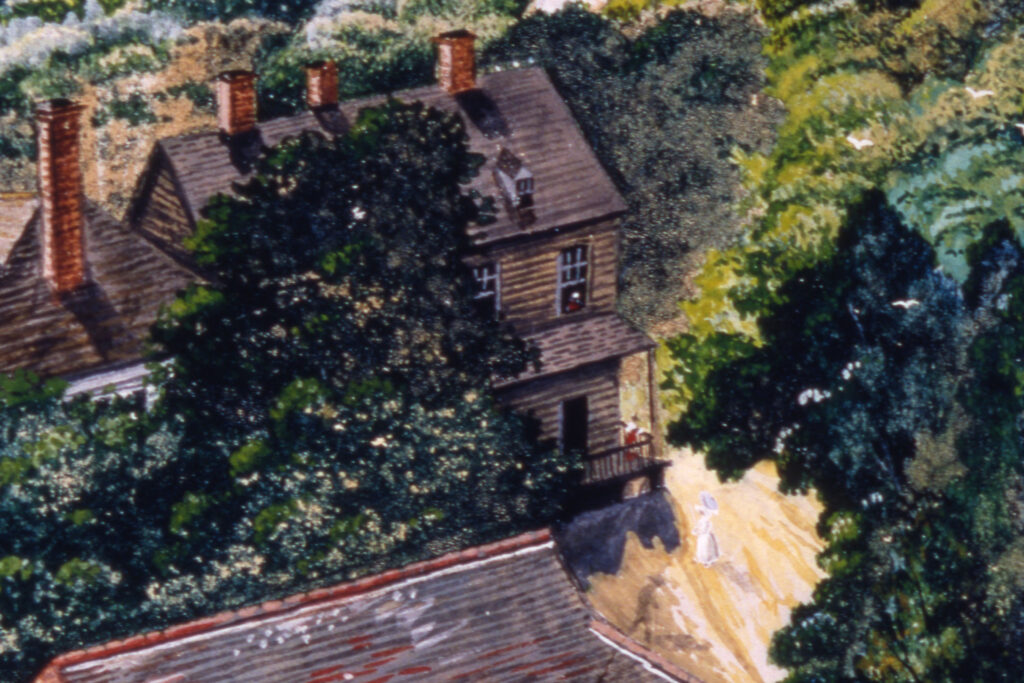
Tondee and his partners also built the first two-story brick courthouse on Wright Square in the late 1760s, and Tondee was appointed culler and inspector of lumber for the port in Savannah in 1767. He won a seat on the Workhouse Commission in 1770 and served until his death. His highest government position was messenger to the Commons House, from where he watched the growing unrest of the Whigs in Georgia.
The names of two groups he helped to found suggest his concern with the plight of working men and their need for solidarity. In 1750 Tondee, Richard Milledge, and Benjamin Sheftall formed the Union Society, at first an attempt to protect artisans from the advent of enslaved craftsmen (slavery was not admitted in Georgia until that year) and later a benevolent association to aid widows and orphans. Today it is the overseeing body of Bethesda. In 1774 Tondee headed the second Masonic lodge in Georgia—Unity—composed almost exclusively of tradesmen. Among its twenty-five members, at least eleven would emerge as Sons of Liberty, several with distinction.
Tondee’s Tavern and the Revolution
The first record of any assembly at Tondee’s Tavern was the twentieth-anniversary meeting of the Union Society on April 23, 1770, and it foretold the kind of patrons the tavern would attract. Only a month earlier, the Union Society had honored Jonathan Bryan, one of its members who had been removed from the governor’s council for opposing the Townshend Acts. Over the next few years Masonic lodges, the Society of St. Patrick, and other clubs met at Tondee’s, and Governor James Wright even attended the anniversary banquet of the Union Society there in 1774.
Events of that summer, however, made Tondee’s Tavern the hub of revolutionary sentiment. On August 10, 1774, despite a ban from the governor, delegates from every parish convened at the tavern, where Tondee himself stood at the door with a list to keep out intruders. Though failing to elect delegates to the Continental Congress, the meeting passed resolutions and organized as a general committee to correspond withother colonies.
On January 18, 1775, a Provincial Congress met in Savannah, and though the site was unspecified, Tondee himself was one of the delegates from Christ Church Parish. Again, the body passed resolutions but failed to elect delegates to Philadelphia. But with the news in May of the British strike against Massachusetts colonists in the Battles of Lexington and Concord, patriots were galvanized. On June 5, after erecting a liberty pole, rebellious Georgians met at Tondee’s Long Room to dine and celebrate the king’s birthday. Most of the thirty toasts—punctuated by cannon fire—named supporters of American rights in the colonies and in England, and that night a group of about forty Sons of Liberty paraded through town with arms and fixed bayonets.
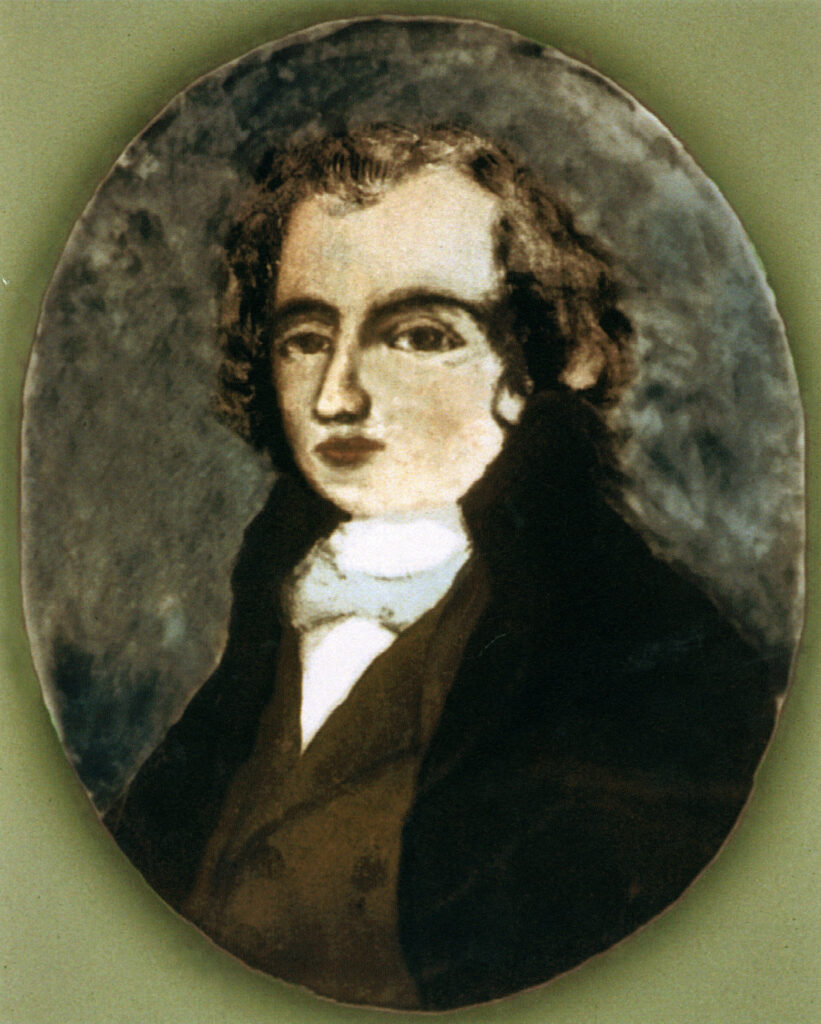
On July 4, 1775, the Second Provincial Congress convened at Tondee’s Long Room, and over the next two weeks effectively created the first government of the state. Delegates were elected to the Continental Congress, an administration was framed, and a Council of Safety and Parochial Committee were empowered to act in their stead during recess. Restricting trade, seizing British arms, and persecuting Tories, these bodies would continue to operate out of Tondee’s Tavern. After Tondee’s death in October 1775, his wife, Lucy, carried on until the British occupation of Savannah in 1778; when the revolutionary government of Georgia returned at the war’s end in 1782, it reconvened at the tavern.
Lucy Tondee died in 1785, and seven years later, the Tondee lot and buildings were sold. In 1796, in the first of Savannah’s great fires, this “cradle of liberty in Georgia,” along with two-thirds of the town, vanished into smoke and legend.


